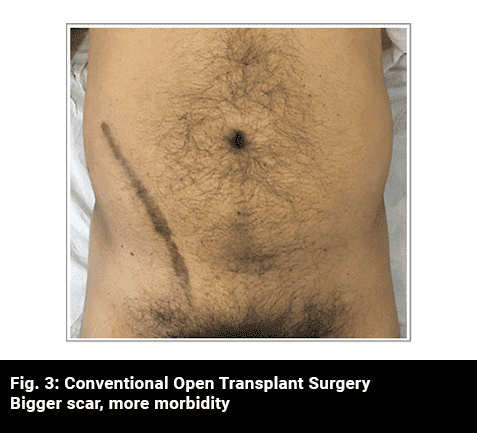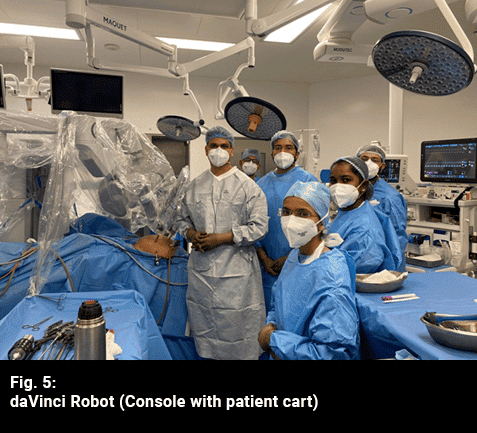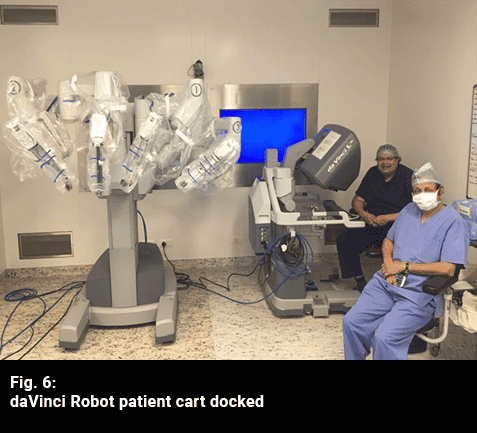Laparoscopic Donor Nephrectomy & Robotic Recipient Surgery For Kidney Transplant

End-stage renal disease (ESRD) is the terminal stage in chronic kidney disease, associated with high morbidity and mortality. Chronic kidney disease and ESRD globally result in approximately 7, 35,000 deaths annually.
Hemodialysis, peritoneal dialysis, kidney transplant (KT) are the different modalities available for renal replacement therapy. However, Kidney Transplantation (KT) remains the treatment of choice for ESRD as it leads to longer survival and superior quality of life. It has traditionally been performed by open approach, but recently, a minimally invasive approach has been developed to perform KT.
Laparoscopic Donor Nephrectomy
The minimally invasive laparoscopic approach has become the procedure of choice worldwide for donor nephrectomy due to its obvious advantages in terms of less morbidity, significantly shorter hospital stays and a quicker return to work. The added benefit in terms of cosmetic Pfannensteil scar comes as a big plus when it comes to increasing the available donor pool. It is an extremely safe operation with a mortality rate of 0.03% and very low morbidity. The chances of hemorrhage, injury to other organs, cardiopulmonary complications, thromboembolic events, and gastrointestinal complications each occur in less than 1 percent of cases. The learning curve of the procedure has prevented it from becoming mainstream in India, but in experienced hands, the surgery is safe, standardized and reproducible.

Robotic Assisted kidney transplantation (RAKT)
Kidney Transplant has traditionally been performed by open surgery, but it carries its own morbidity. Giulanotti et al. did the first robotic assisted kidney transplant (RAKT) in Chicago in 2010 and Boggi et al. performed the first one in Europe in 2011. Our group performed Maharashtra’s first robotic assisted kidney transplant in July 2017.
RAKT leads to smaller incision, lesser surgical infections, technical complications, blood loss and postoperative pain, a shorter hospital stay and convalescence period, and better cosmesis. The da Vinci robotic surgical system has many advantages over pure laparoscopic surgery namely – three-dimensional vision, control of the camera by surgeon, articulated wristed instruments with 7° of movements leading to ease of suturing, and elimination of tremors (an essential requirement for performing a good vascular anastomosis).
One of the main the indications for RAKT is morbid obesity since higher body mass index (BMI) in kidney transplant recipients is associated with increased risk of surgical site infections, which negatively impact graft survival. RAKT is an emerging and feasible modality of minimally invasive surgery and it has definite advantages over traditional open kidney transplantation, especially in obese patients.
If you are considering kidney transplantation, we recommend that you visit our hospital to consult top urologists in Mumbai and decide the best treatment option for you.





















